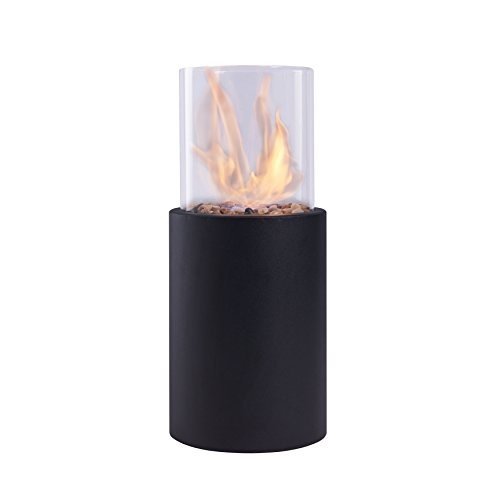
Brenna Kirchner @ fireplaces5743 Narys nuo: 28 Jun 2025
Apie mane
10 Myths Your Boss Has Regarding Outdoor Stoves Online
Best Value Fireplaces: An In-Depth Guide
The fireplace has long been considered as the heart of a home, supplying heat, ambiance, and a focal point for celebrations. However, navigating through different choices can be frustrating, particularly with spending plan restrictions in mind. This article provides a useful guide on the best value fireplaces, detailing their types, features, and advantages to help homeowners make a smart option.

Kinds of Fireplaces
Fireplaces come in a range of designs and types, each with various qualities, expenses, and benefits. Here's an in-depth look at the most typical types of fireplaces offered in the market today.
| Type of Fireplace | Description | Average Cost | Pros | Cons |
|---|---|---|---|---|
| Wood-Burning | Burn logs to create heat and atmosphere. | ₤ 1,500 - ₤ 5,000 | Authentic experience, natural heat | Needs regular maintenance, less efficient |
| Gas Fireplaces | Uses natural gas or propane to produce heat. | ₤ 2,000 - ₤ 5,000 | Easy to use, cleaner than wood | Restricted to gas supply, installation costs |
| Electric Fireplaces | Mimics flames with LED technology and produces heat by means of electrical energy. | ₤ 200 - ₤ 3,000 | Easy setup, installation flexibility | Less genuine feel, greater operating expense |
| Pellet Stoves | Usage compressed wood or biomass pellets, providing an eco-friendly alternative. | ₤ 3,000 - ₤ 4,500 | Efficient, low emissions | Needs electrical power to operate, needs storage for pellets |
| Ethanol Fireplaces | Burns ethanol fuel, producing flames that don't require a chimney. | ₤ 300 - ₤ 2,500 | No vents needed, portable | Higher fuel expense, security issues |
Factors to Consider When Choosing a Fireplace
Selecting the best fireplace is not almost aesthetics; it also includes practical considerations. Here are vital factors to bear in mind:
1. Budget
- Determine just how much you are willing to spend. Remember that installation and maintenance costs can accumulate.
2. Space and Size
- Guarantee the fireplace fits well within the space, considering both the area available and the heating requirements.
3. Fuel Type
- Pick the fuel source based upon availability, expense, and the type of ambiance you wish to attain.
4. Efficiency
- Choose units with high-efficiency ratings to guarantee you are getting the most value for your cash in regards to heat output.
5. Visual Appeal
- Select a style and design that complements existing decoration and boosts the total appeal of the space.
6. Regulations
- Be conscious of regional regulations, allows, and structure codes that might impact your fireplace installation.
Top Best Value Fireplaces
Based upon consumer evaluations, specialist opinions, and total value for cash, here are some of the very best value fireplaces currently readily available in the market:
1. DuraVent Pellet Stove
- Type: Pellet
- Typical Cost: ₤ 2,000
- Emphasizes: Highly efficient with low emissions, making it an exceptional alternative Shop For Electric Fireplaces environmentally-conscious house owners.
2. Napoleon B36NTR-1
- Type: Gas
- Average Cost: ₤ 2,500
- Emphasizes: This fireplace is aesthetically enticing and highly efficient, with a smooth style and adjustable flame.
3. Duraflame Electric Heater Stove
- Type: Electric
- Typical Cost: ₤ 200
- Highlights: Affordable and portable, best for smaller sized areas or including atmosphere to a room without irreversible installation.
4. Real Flame Juliet Gel Fireplace
- Type: Ethanol
- Average Cost: ₤ 300
- Highlights: A trendy choice for modern areas that needs no venting, making it flexible and easy to set up.
5. Vogelzang VG5790
- Type: Wood-Burning
- Typical Cost: ₤ 800
- Highlights: Offers a traditional wood-burning experience with a sleek modern design, best for those who treasure the traditional ambiance.
Frequently Asked Questions (FAQs)
Q1: What is the most economical fireplace option?
A1: Electric fireplaces tend to be the most affordable in terms of initial purchase price and installation, but can have greater operating costs compared to gas or pellet systems.
Q2: Are gas fireplaces more secure than wood-burning fireplaces?
A2: Yes, gas fireplaces normally produce fewer emissions and pose a lower risk of chimney fires as they don't produce creosote like wood-burning units.
Q3: Can I set up a fireplace myself?
A3: While some electric fireplaces permit for easy self-installation, other types, specifically gas and wood-burning models, usually need professional installation due to venting and security issues.
Q4: How do I keep my fireplace?
A4: Regular upkeep consists of cleaning the chimney (for wood-burning fireplaces), looking for gas leaks (in gas units), and ensuring correct ventilation for electric models.
Q5: Is an ethanol fireplace an excellent choice?
A5: Ethanol fireplaces are appealing for their modern style and ease of setup. Nevertheless, they can be less efficient and more costly to run long-term compared to other fuel types.
Picking a value fireplace that meets your visual choices and practical requirements involves comprehensive research study and factor to consider. By comprehending various types of fireplaces, their associated expenses, and benefits, house owners can make informed choices that will not only fit their spending plan however likewise boost the warm and welcoming atmosphere of their homes. Whether going with an electric, gas, wood-burning, pellet, or ethanol model, the best fireplace awaits to change your living space.


